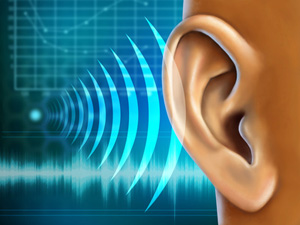This is an excerpt from a course on the excellent Lynda training site. It’s about microphone directional response. I wrote and article about this here – Directional and Omnidirectional Microphones – What Are They Good For? . This video (below) is a great additional piece to help you better understand the same topic. Understanding how a microphone pics up sound is pretty important in both recording and live sound. You can achieve a lot of cool stuff, like lowered noise (with a cardioid’s “null” pointing to the noise source), by knowing the polar pattern of your microphones.
Check out the video on microphone directional response below:
Recording Tips and Techniques
Tips For Getting A Distorted Radio Voice Effect
You have heard it in tons of recordings – that vocal that sounds like it’s coming through a radio, all thin and kinda distorted. Here is a video that shows you how to do that in Pro Tools. Though you can do this – or something very close to it – in any recording software using EQ (equalization). Essentially it involves removing most of the frequencies in both the high and low areas, leaving only a narrow band in the middle frequencies, which is what telephone and radio voices sound like to us.
See the video below for how to do it in Pro Tools:
To Dither Or Not To Dither?
 Dither is a type of low-level noise that is typically added to digital audio when reducing the bit-depth – going from 24 to 16-bit for example. Basically, dither is a random form of noise that gets applied because in digital audio conversions, you end up with non-random noise, which is more noticeable due to the patterns created. It’s sort of like the difference between the noise of a leaky faucet (drip, drip, drip…), or snoring, both of which have a pattern, and white-noise, which is random. White noise is actually rather soothing and is used to mask other types of noise. I even have a pair of white-noise ear plugs I use when sleeping, traveling, waiting in waiting rooms, etc. to block out all the non-random noise. Well in a way, that is sort of what dither does.
Dither is a type of low-level noise that is typically added to digital audio when reducing the bit-depth – going from 24 to 16-bit for example. Basically, dither is a random form of noise that gets applied because in digital audio conversions, you end up with non-random noise, which is more noticeable due to the patterns created. It’s sort of like the difference between the noise of a leaky faucet (drip, drip, drip…), or snoring, both of which have a pattern, and white-noise, which is random. White noise is actually rather soothing and is used to mask other types of noise. I even have a pair of white-noise ear plugs I use when sleeping, traveling, waiting in waiting rooms, etc. to block out all the non-random noise. Well in a way, that is sort of what dither does.
Anyway, here are two articles. One is in favor of always dithering (in the audio sense described above – not in the “being indecisive” way:)). The other is not saying it is bad to dither, but makes a case that for most kinds of pop music, it doesn’t make much noticeable difference.
The first dither article, championing the necessity of dither is here: http://productionadvice.co.uk/dither-or-distort/
And the article, suggesting that, in pop music at least, dither may not be necessary, is here: http://www.ethanwiner.com/dither.html
In the end, you’ll have to try things out, listen, and decide for yourself.
Cheers!
Ken
Tips On How To Use Multiband Compression
Multiband compression is a tool that gives you more control over what gets compressed when you’re, well, using a compressor (see our article What is Multiband Compression for more details). Usually the action of the compressor is universal in terms of the frequencies affected. You give the effect some parameters so that it knows where to kick in (that’s the threshold of signal level that triggers the action), and then you tell it how much to reduce the signal level (turn it down) for each decibel (that’s called the ratio – 1:1 means nothing gets turned down). Then the compression gets applied to any and every frequency that happens to cross the threshold.
But with multiband compression, you can apply different settings for different frequencies.
Here is an article that will show you some ways you can use multiband compression.
http://www.prosoundweb.com/article/in_the_studio_how_to_use_multiband_compression_includes_audio/
Parallel Compression Tips For Drums
Here is a video showing some tips on how to do a kind of compression when you have drums in your music mix. These tips show something called parallel compression, and it uses Pro Tools. But as is usual with technique videos and articles, you can do this with most any DAW (digital audio workstation) software.
Here is the video: